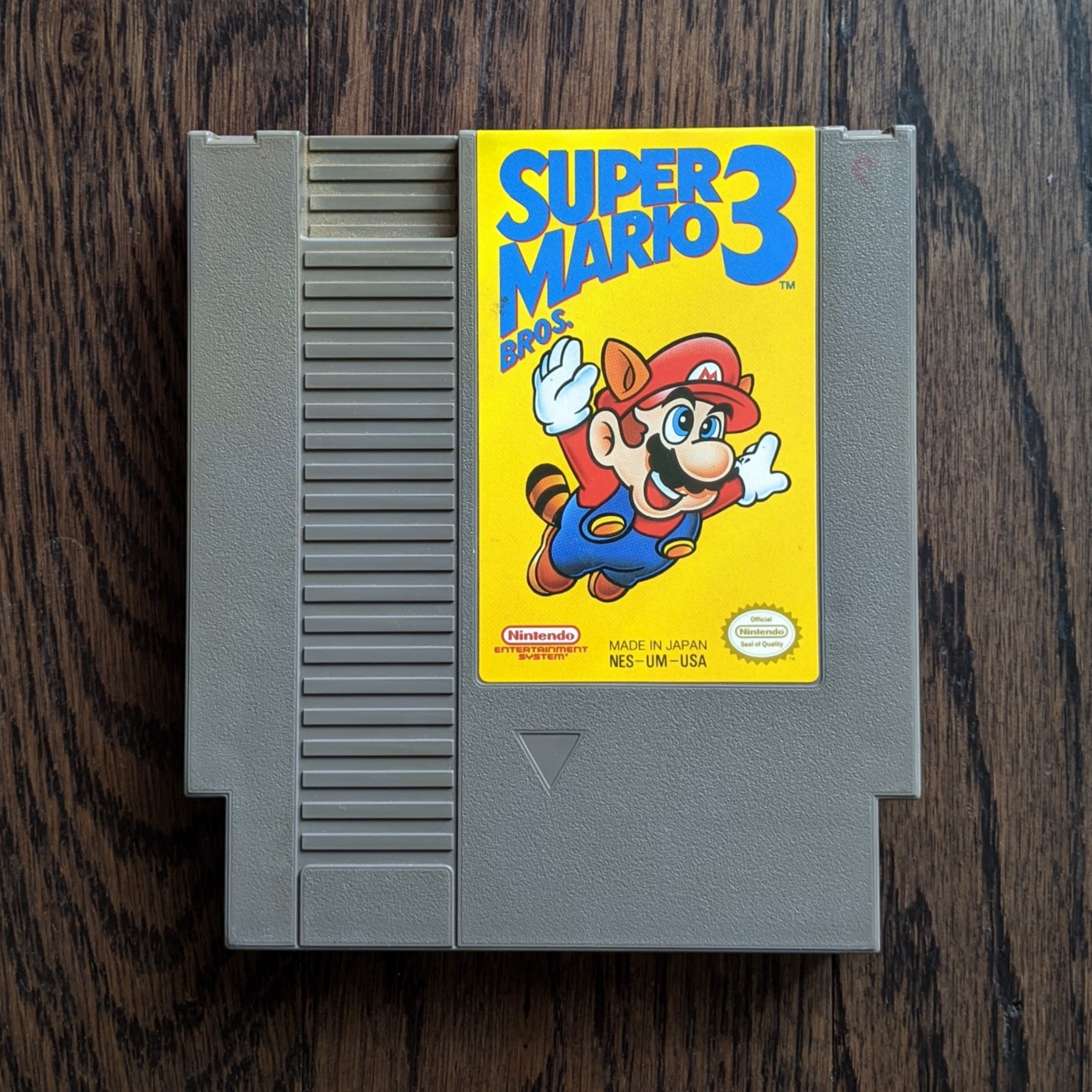
There is no way of overstating the importance of Super Mario Bros. 3 in the history of gaming. Not only is this game an enormous expansion on the game design ideas of its predecessors, taking more after Mario 1 than Mario 2, but Mario 3 also has huge cultural significance, being only video game to be introduced in North America for the first time with a feature length film. And the hype certainly wasn’t for nothing. Super Mario Bros. 3 was extremely innovative, with branching, non-linear world maps in a time when most games were linear, and brand new ways of controlling Mario the likes of which we had never experienced. It was at the time the epitome of what a quality sequel looks like. But does Super Mario Bros. 3 still deserve that accolade? Does it have replay value? (This may be a dumb question to ask).
Story
As always, we will first take a look at the story of Super Mario Bros. 3. According to the game manual, all is not well in the Mushroom World. Bowser has sent his 7 children, the Koopalings, to make mischief and do as they please in the normally peaceful Mushroom World. They have stolen the royal magic wands from each of the 7 countries in the Mushroom World, and have used the magic to turn the kings into animals. Mario and Luigi must recover the royal wands from the Koopalings, and return the kings to their normal selfs.
This is a simple and fun storyline, however it doesn’t serve much purpose other than give context to the events taking place in the game. As a result, the story itself won’t give you much of a reason to come back to Mario 3 but it won’t detract from the experience. And honestly, I think all the kings turned into animals are kind of funny.
Gameplay
The gameplay is where Super Mario Bros. 3 really shines. Mario 3 took the platforming elements popularized by its predecessors and extended them adding brand new ways to move and progress through each level. Flying with the racoon suit, swimming with the frog suit, or bouncing over pirahna plants with the Goomba’s shoe, all these methods of platforming opened up new avenues for exploring the levels in game. It also provided an interesting medium for hiding secrets in levels by making it so certain areas are only accessible if you have a specific suit. This in turn adds a lot of replayability to the game as you can easily discover secrets in levels you’ve beaten many times before by completing it with a different suit.
The addition of the world map in Mario 3 also contributes immensely to its replayability. The branching, non-linear structure of the map means that you can take a different path through each world every time you play, electing to play new levels and avoid ones you’ve beaten before. Furthermore, world map items you can collect, such as the hammer and flute, allow even greater replayability and world map exploration. A hammer saved in one world can be used in the next world to access a normally blocked area.
While we are on the topic of the world map, I just want to highlight the brilliance of the world design in Mario 3. Each world has a truly unique character that comes out not only in the map, but in the design of each level. For example, in world 4, the Giant Land, all the enemies and item boxes in the levels are oversized, and in world 7, the Pipe Land, the theme of each level is a lot of green pipes. This dedication to theming and creative level design is what makes Mario 3 so memorable, and always make me want to go back and play through it.
One element of the game that feels dated however is the lack of a save feature. With the sheer number of levels and content in Mario 3, it can be very difficult to play through the whole game in one sitting.
Visuals
Visually speaking, Mario 3 is an NES game, subject to NES limitations, and just doesn’t hold up graphically the way that SNES games still do to this day. That said, Mario 3 is probably one of the better looking games to be released on the NES. The sprites are well animated, the game is colourful and bright and it is generally easy to make out what is happening on screen. In this case, the visuals shouldn’t detract from the gameplay experience.
Music
The music in Mario 3 is Koji Kondo at his best. Catchy, memorable tracks set the perfect tone for the levels in game and serve to keep you engaged the whole time through. There aren’t any breathtaking or awe inpiring tracks like you might find in a game like Final Fantasy, but the soundtrack serves its purpose as an accompaniment to the gameplay perfectly.
Conclusion
In closing, Super Mario Bros. 3 is an extremely replayable game, and is more than worth replaying today (I feel like this is almost a truism). I would highly recommend that anyone who has never played this game pick it up and give it a shot. It’s a game that every gamer should experience more than once in their lifetime.
If you are interesting in picking up a copy of Super Mario Bros. 3, check out the available listings on Replay Value.

